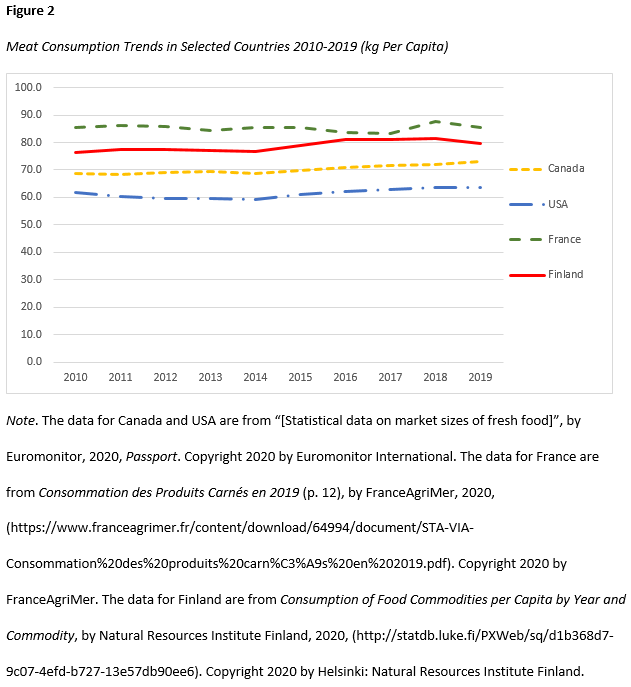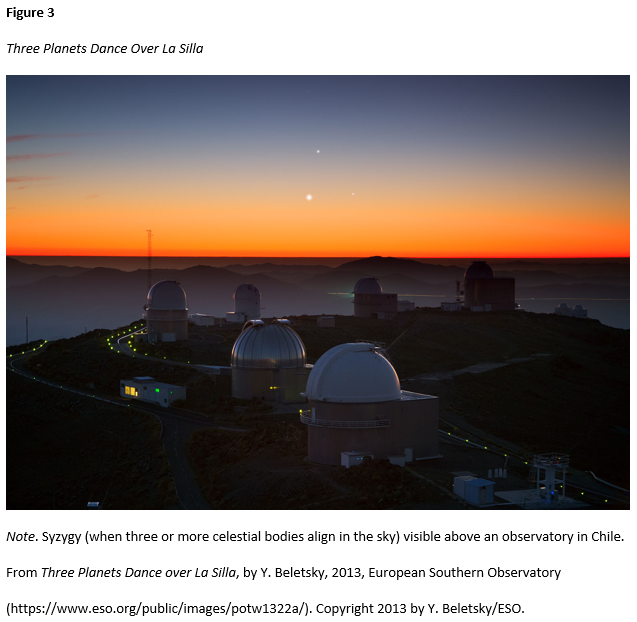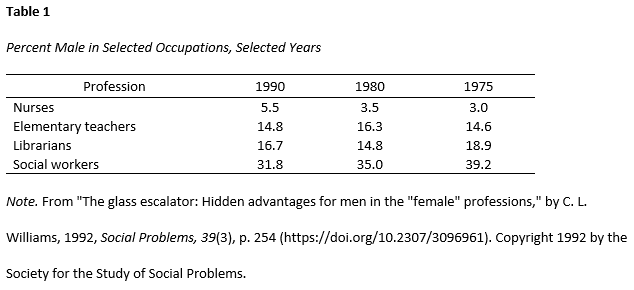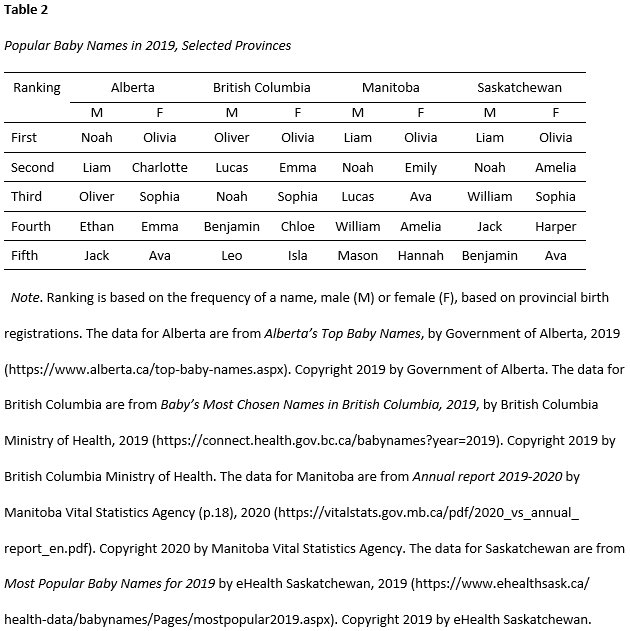How to Refer to a Table in Apa
This guide is based on the Publication Manual of the American Psychological Association, 7th ed. It provides selected citation examples for common types of sources. For more detailed information consult directly a print copy of the style manual.
Keep track of your document references/citations and format your reference lists easily with citation management software.
Introduction
Tables and figures (includes images) follow similar set up and formatting. The guidelines below focus on common examples used by students for academic papers. For details on creating tables or figures for submission to journals or graduate theses, see APA's Tables and figures or consult the guide directly (Section 7, pp. 195–250).
Wondering if you can use that image you found online? Refer to SFU's Copyright and your coursework or the FAQ What is fair dealing? for guidelines on use.
General guidelines
- All figures and tables must be mentioned in the text (a "callout") by their number. Do not refer to the table/figure using either "the table above" or "the figure below."
- Assign table/figure # in the order as it appears, numbered consecutively, in your paper - not the figure # assigned to it in its original resource.
- A note is added when further description, for example, definitions or copyright attribution, is necessary to explain the figure or table. Most student papers will require a general note for copyright attribution and acknowledgement whether it is reprinted or adapted from another source. Consult the guide directly for detailed instructions on formatting notes (Section 7.14, pp. 203–205).
- For copyright attribution templates, consult Table 12.1 on page 390 of the guide (Section 12.18, pp. 389-390).
- If permission is required for reprinting or adapting, at the end of the citation place: Reprinted with permission or Adapted with permission followed by a period.
- All the sources must have a full bibliographic entry in your Reference List.
- Review your figure/table against the appropriate checklist found only in the guide (Sections 7.20, Table, p. 206 and 7.35, Figure, p. 232).
Order of components
Above the figure/table
- Write "Figure" or "Table" in bold font, flush left, followed by the number, for example, Figure 1.
- Write the figure/table title using italic case below the figure/table number,
- Double-space the figure/table number and title,
- Embed image.
Below the figure/table
- On a new line below the figure/table, flush left, place Note. Provide further details/explanation about the information in the figure/table only if necessary. State if material is reprinted or adapted—use "From" if reprinted or "Adapted from" if adapted. Followed directly by the copyright attribution—this is basically the same information as found in the reference list entry but in a different order.
- Separate figure/table from the text with one blank double-spaced line.
Placement in paper
- There are two options when using tables and figures in a student paper:
- embed in the text after it is first mentioned or,
- place on a separate page after the reference list (an appendix).
- When embedding all figures and tables are aligned with the left margin.
- All examples in this guide show embedded figures and tables.
Refer directly to the guide for more detailed notes on placement (Section 7.6, p. 198).
Examples for citing figures & images
Figures
Figures include: images found online, maps, graphs, charts, drawings, and photographs, or any other illustration or non-textual depiction in printed or electronic resources.
See APA's Figure set up for detailed information on the basic components of a figure, principles of creation, and placement in papers with formatting requirements, or consult the guide directly (Section 7.22–7.36, pp. 225–250).
Review APA's guide for Accessible use of colour in table/figures for best practices.
Using your own photographs? No citation or copyright attribution is required in the note, but may require a signed release if identifiable people are present (Section 7.30, p. 230).
Exact copy from a single source (aka reprinted)
The following example is when it is reproduced in your paper exactly as it appears in another source: Same format or state, no reconfiguration or new analysis.

Compiled from variety of sources
The following example is for citing a figure that you have created by compiling information from a variety of sources. For example, if you combined data from a database, a website , and a government report to create a new chart. Each source requires a copyright attribution in a general note and full bibliographic entry in the Reference List.

Images
See APA's Clip art or stock image references, Image with no attribution required, Image requires an attribution, or consult the guide directly (Section 12.14–12.18, pp. 384–390 ).
Citing but not reproducing the image? See Visual: Artwork in museum, PowerPoint slides, photographs, clipart/stock image, maps retrieved online in this guide for examples or consult the guide directly (Section 10.14, pp. 346–347).
Image with attribution

Reference list examples
Beletsky, Y. (2013).Three planets dance over La Silla [Photograph]. European Southern Observatory. https://www.eso.org/public/images/potw1322a/
Euromonitor International. (2020). [Statistical data on market sizes of fresh food]. Passport. Retrieved January 21, 2021, from https://go.euromonitor.com/passport.html
FranceAgriMer. (2020, September). Consommation des produits carnes en 2019. https://www.franceagrimer.fr/content/download/64994/document/STA-VIA-Consommation%20des%20produits%20carn%C3%A9s%20en%202019.pdf
Natural Resources Institute Finland. (2020). Consumption of food commodities per capita by year and commodity [Statistics database]. http://statdb.luke.fi/PXWeb/sq/d1b368d7-9c07-4efd-b727-13e57db90ee6
Okemasim–Sicotte, D. R., Gingell, S., & Bouvier, R. (2018). Iskwewuk E–wichiwitochik. In K. Anderson, M. Campbell, & C. Belcourt (Eds.), Keetsahnak /Our missing and murdered Indigenous sisters (pp. 243–269). University of Alberta Press.
Irish, J. (2019).Sequoia National Park.[Photograph]. National Geographic. https://www.nationalgeographic.com/travel/destinations/north-america/united-states/61-national-parks-photos/#/giant-tree-trail-sequoia-national-park.jpg
Drewes, W. (n.d.).Frog and insects (no.200). [Painting]. The Smithsonian Institution. https://www.si.edu/object/saam_1968.9.50
Comments
- See the General Notes in this guide for help with creating citations with missing information, e.g. using a description if no title—see Euromonitor International in the reference list above.
- For figures compiled from multiple sources, identify individual source information using the following format in the "From" statement: Note. The data for Country Name are from [copyright attribution according to source]. End each copyright attribution with a period.
- Use author-date in-text citation when the data is transformed (reconfigured or reanalyzed) to produce different numbers. (Section 12.15 Data subsection, p. 385).
- If work is published or read online, use live links—check with your instructor for their preference.
Examples for citing tables
Tables are characterized by a row-column structure. See APA's Table set up for detailed information on the basic components of a table, principles of creation, and placement in papers with formatting requirements, or consult the guide directly (Section 7.8–7.21, pp. 199–224).
Exact copy from a single source (aka reprint)
The following example is when it is reproduced in your paper exactly as it appears in another source: Same format or state, no reconfiguration or new analysis.

Compiled from variety of sources
If you have compiled data from a variety of different sources and put it together to form your own table, you still need to cite where you got the information from. Each source requires a copyright attribution in a general note and full bibliographic entry in the Reference List.

Reference list examples
British Columbia Ministry of Health. (2019). Baby's most chosen names in British Columbia, 2019. https://connect.health.gov.bc.ca/babynames?year=2019
eHealth Saskatchewan. (2019). Most popular baby names for 2019. https://www.ehealthsask.ca/health-data/babynames/Pages/mostpopular2019.aspx
Government of Alberta. (2019). Alberta's top baby names. https://www.alberta.ca/top-baby-names.aspx
Manitoba Vital Statistics Agency. (2020). Annual report 2019-2020. https://vitalstats.gov.mb.ca/pdf/2020_vs_annual_report_en.pdf
Williams, C. L. (1992). The glass escalator: Hidden advantages for men in the "female" professions. Social Problems, 39(3), 253-267. https://doi.org/10.2307/3096961
Comments
- For tables compiled from multiple sources, in the "From" statement, identify each individual source information. e.g.: Note. The data for Country Name are from [copyright attribution according to source].End each copyright attribution with a period.
- If you have multiple kinds of data (population figures, consumer information, etc...) in one table you would describe each set of data. e.g.: Note.Population figures for XYZ are from [ copyright attribution according to source ] and for ABC are from [ copyright attribution according to source ]. Data for pet ownership for XYZ are from [ copyright attribution according to source ] and for ABC are from [ copyright attribution according to source ]. End each copyright attribution with a period.
- Use an author-date in-text citation when the data is transformed (reconfigured or reanalyzed) to produce different numbers. (Section 12.15 Data subsection, p. 385).
- All the sources must have a full bibliographic entry in your Reference List even though the information in the Note field uses a lot of the same information.
- If work is published or read online, APA recommends using live links—check with your instructor for their preference.
How to Refer to a Table in Apa
Source: https://www.lib.sfu.ca/help/cite-write/citation-style-guides/apa/tables-figures
0 Response to "How to Refer to a Table in Apa"
Post a Comment